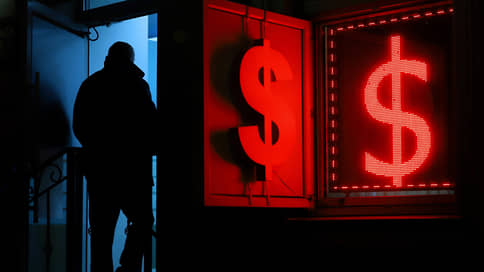Correction of machines – Newspaper Kommersant No. 45 (7490) dated 03/17/2023
[ad_1]

The abnormal jump in the dollar, euro and yuan rates on the spot market of the Moscow Exchange in the middle of the day on March 16 could be associated with manipulation in the futures market. On this day, futures contracts (pegged to spot market quotes) were executed, and speculators could raise the exchange rates to correct their position on futures. Such operations are not uncommon for the Russian market, however, the current narrowness of the market has led to a sharp jump in rates, amplified by trading robots. The situation could be changed by adjusting the calculation of the currency fixing, but this issue is still only being discussed.
On Thursday, March 16, there was a sharp increase in the volatility of trading in the dollar, euro and yuan with delivery “tomorrow” on the currency market of the Moscow Exchange from 12:25 to 12:30. The dollar exchange rate soared by 1.2 rubles in two minutes, to 77.49 rubles / $ (maximum since April 20), and almost as quickly rolled back to the level of 76.72 rubles / $. At the same time, the euro soared by 1.83 rubles to 82.62 rubles/€, with a subsequent rollback to 81.12 rubles/€. The Chinese currency rose by 17 kopecks. (1.5%) to RUB 11.21/CNY before returning to RUB 11.03/CNY. All these rapid jumps in quotations were accompanied by an increase in trading volumes: according to the exchange, in ten minutes on the dollar it amounted to about 35 billion rubles. (26% of the total volume per day), for the euro – about 14 billion rubles. (18%), in yuan – 16 billion rubles. (14%). Similar fluctuations (but with smaller volumes) were recorded at the auctions with “today” settlement.
As Vladimir Evstifeev, head of the analytical department of Zenit Bank, explains, “part of the trading algorithms monitors the movement of the broad market and reacts to the possibility of arbitrage in the event of a “skew” in the exchange rate for a particular currency pair.”
There could be a manipulation of rates, suggest market participants. On Thursday, quarterly futures for USD/RUB, EUR/RUB, CNY/RUB currency pairs were executed (expired). “The fixing value is taken as the execution price of futures, which is calculated in accordance with a special formula based on the average transaction and order prices calculated per second for the period from 12:25:01 to 12:30:00,” explains the leading analyst of the Global Research Department “Opening Investments” Oleg Syrovatkin. According to the chief analyst of Sovcombank Mikhail Vasiliev, some large speculators who held a long position on the futures decided to weaken the ruble in this period of time in order to increase profits. “The operation looks rather risky and calculated on the fact that during these five minutes large sellers, such as exporters, will not appear and will not have time to seize the moment to sell the currency,” Oleg Syrovatkin believes.
In five minutes, when the calculation of currency fixing is carried out, volatility almost always increases, two interlocutors of Kommersant noted in the foreign exchange market. “In the first months after the start of the NWO, the movements were also very strong. The current movement coincided with the renewal of a multi-month high, so the game of speculators could be strengthened by robots, ”a trader of a large bank notes. According to him, by now the Russian currency market has become very narrow, foreign investors have left it, and the possibilities of local large banks have become limited due to their inclusion in SDN lists (see “Kommersant” dated February 24). “As a result, it became easier for speculators with significant futures positions to move the course to more profitable positions for them, in the old days they would have met large counter orders, and the game would have less impact on the market than now,” he notes.
A possible solution to the problem could be to increase the fixing calculation time from five minutes to a longer interval, during which it would be more difficult for speculators to manipulate exchange rates, Mikhail Vasilyev believes.
As Vladimir Evstifeev notes, the question is “the reaction to such schemes from the side of the regulator.” If the fact of manipulating exchange rates is proved, “then the punishment for such actions implies, among other things, criminal liability,” he notes. “This issue has been on the agenda for a long time and has been discussed with the regulator, but so far it has not moved beyond discussions,” one of the interviewed traders notes. The Moscow Exchange said that they were analyzing the situation and would discuss “within the framework of user committees the possibility of adjusting the methodology for calculating fixings, if this is demanded by bidders.” In connection with the week of silence (before the meeting of the Board of Directors on the key rate), the Central Bank did not comment on the situation.
[ad_2]
Source link





